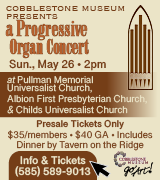Hospital says 0 acquired infections in latest reporting period

Provided photo – Sue Birch, director of environmental services at Medina Memorial Hospital, reviews an infection control monitoring report to validate cleanliness.
Press Release, Medina Memorial Hospital
MEDINA – Infections acquired in health-care settings are the most frequent adverse event in health care. Even those facilities that follow recommended infection control and antibiotic use practices are at risk if they receive patients who carry these germs from other facilities or enter the hospital with an already existing infection.
Late last year, a local public report, based on hospital acquired infection data collected from October 2013 through September 2014 (data that was a year old) showed Medina Memorial Hospital to have a higher than normal number of hospital acquired infections.
This generated an intensive performance improvement in 2014 to review and identify the source of the high numbers. Our efforts have resulted in the implementation of cutting-edge processes.
One key finding was that patients entering the hospital with an existing infection were not always being identified. This resulted in the infections being reported as a hospital acquired infections, even though they were not.
The hospital’s entire infection control protocol was reviewed. This includes the use of standardized protocols, performing blood cultures on admission to identify and begin treatment of exiting infections, following correct hand-washing procedures, cleaning of equipment such as blood pressure cuffs etc. between patients, the types of disinfectant being used, staff and patient education, and ongoing monitoring.
A cleaning verification system was also added to the infection surveillance program to verify the effectiveness of cleaning. Surfaces can be swabbed and measured by a device that measures any germs present and verify that optimal levels of cleanliness are met.
“This is a wonderful device to be added to our infection control surveillance,” said Karrie Mikits, RN, director of infection control. “Patient health depends on the cleanliness of the healthcare environment. This system can quickly and easily evaluate the effectiveness of cleaning materials and chemicals, and measure the effectiveness of standardized cleaning protocols. The software application that is part of the system allows us to track cleaning verification results, quickly identify problem areas, compare multiple facilities or areas, and generate reports for management and record keeping. We get objective measurement of surface cleanliness with on-the-spot feedback on cleaning effectiveness. We can even swab hands to determine the effectiveness of hand washing.”
This aggressive infection control protocol has produced exceptional outcomes. For the most recent reporting period this year, the highest level of improvement possible has been achieved – there were zero hospital acquired infections.
In the reporting period before this, after the aggressive approach to infection control was first initiated, there was a 71.4% improvement in hospital acquired infections.
This time we are at zero, demonstrating that our dedicated staff are continuing to work diligently every day to provide the best possible patient experience in all aspects of their stay with us.










































































